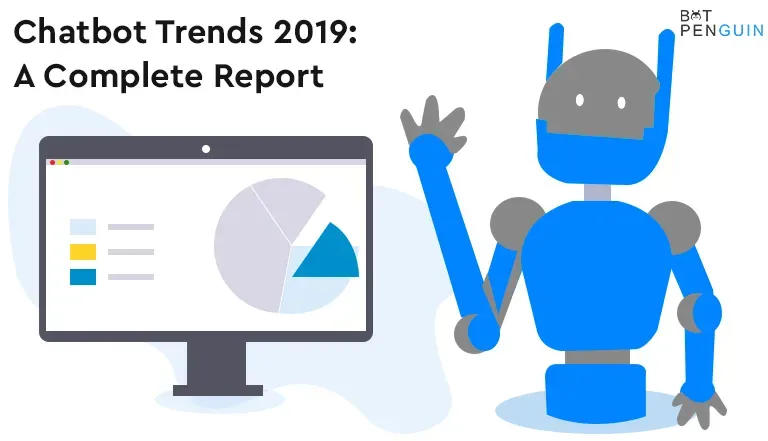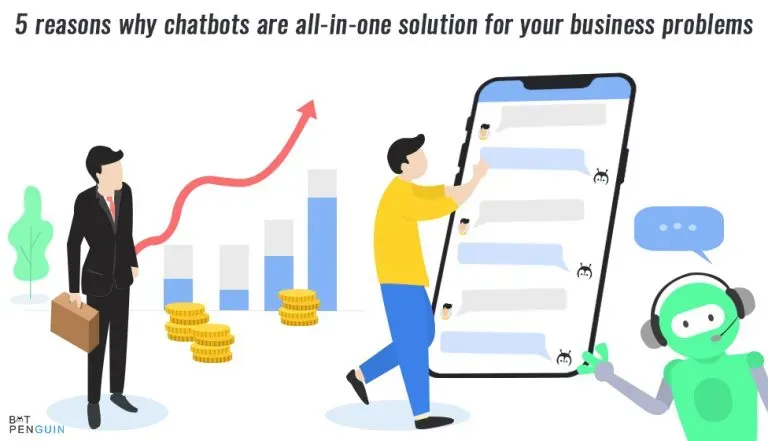As technology has advanced it has become apparent that the field of Artificial Intelligence could benefit from imitating communication models between humans. Early examples include ELIZA 1966 and PARRY in 1972.
There are currently 3 types of chatbot: Narrow/Weak, General, and Strong. Narrow/weak bots are designed for a specific function e.g. customer service or weather forecasting. General bots are what most people think of when they hear the term chatbot and what we would like to focus on.
These bots have some understanding of what is being said and how it should be sponded to e.g., Siri, Cortana, and Google Home Assistant. The last type is the “Strong” chatbots which work similarly to how humans learn over time by seeing what works and what doesn’t work in similar situations
What is a Chatbot?
A chatbot is an artificial intelligence (AI) software that provides users with a natural and intuitive communication interface developed in various forms of science fiction. It is what computer scientists refer to as a natural language understanding (NLU), machine learning, and dialogue management.
They are also known as:
- virtual assistants (VA)
- conversational agents (CA)
- chatterbots / chatterbox(es)
- talk bots / talkbox(es).
How do Chatbots work?
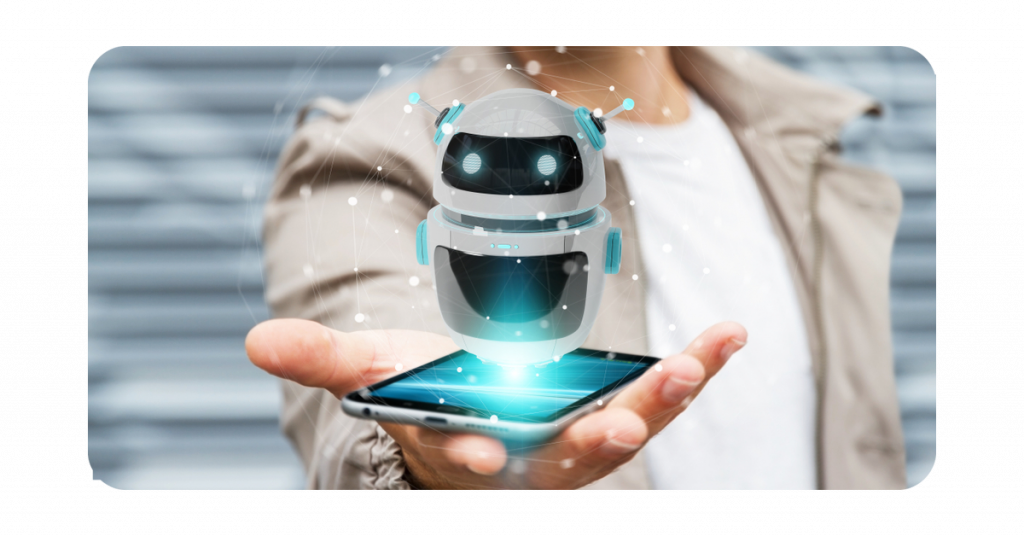
Chatbots are artificial intelligence-powered software that aims to conduct human-like conversations for the purpose of fulfilling specific tasks.
A chatbot is also an AI-based software designed to converse with people using a natural language processing system by machine learning algorithms. The main concept behind creating the Chatbots is to maximize user satisfaction by reducing the need for human intervention as much as possible or minimizing human interaction where it isn’t required at all.
It mainly uses Machine Learning (ML) and Natural Language Processing (NLP) techniques like keyword spotting, pattern matching, Markov chains, neural networks, etc. These days’ companies prefer chatbots due to their high efficiency rates both in terms of time and resources. They can respond faster than humans, do not sleep, and can churn out a large number of interactions in a single day.
Chatbots are being increasingly used to handle customer queries and have started to take up roles traditionally performed by call center employees. The chatbot technology hasn’t been restricted to banks and other financial services but has also extended its application to e-commerce, fraud detection, insurance, etc.
Chatbots help in communication between humans and machines where the machine responds with relevant responses or information which would have otherwise required an extensive amount of time from a human employee.
Does this article share how chatbots work? How they can be useful for businesses?
Chatbot Types
There are three main types of chatbots; rule-based bots and AI-powered bots.
Rule-based chatbots
These rule-based chatbots are programmed to follow a set of rules in order to reply to questions or comments. The AI-powered bots on the other hand use machine learning techniques for natural language processing which enables them to give human-like responses.
The simplest way for companies is to build their chatbot with a rule-based system because it works well when there are limited queries asked by customers and it is easy to train staff on how they should respond. It can be easily integrated into an existing business process without making any changes to data structure or applications which makes it less expensive than the AI-powered bots. The conversation rules mostly include key phrases that trigger corresponding answers.
A rule-based chatbot uses explicit rules written by programmers to respond to certain types of comments. These types of bots provide customers with prewritten answers in order to respond to frequently asked questions, as well as provide them with the option to ask their own questions. Many times these types of bots are simply just used as an aid to customer service, and it is up to the human on the other end of the chatbot to respond appropriately.
The types of questions that these types of chatbots respond to are often very specific and require a simple, direct response. The types of responses can either be pre-written or generated using keywords found in the frequently asked question (FAQ) requests. Since they use rules-based programming, there is little room for error as long as all of the rules have been correctly programmed into the bot’s software.
Rule-based chatbots are also limited by their programming language which cannot readily provide solutions for a wide array of problems since a change would require extensive reprogramming.
One example rule-based chatbot was developed by Michael Mauldin, the creator of ALICE (artificial linguistic internet computer entity). The types of content and skills ALICE and her chatbots can learn are limited to subjects like weather and directions.
AI-powered Chatbots
These AI-powered bots chatbots, on the other hand, learn how humans speak and how to effectively respond to questions. By using information about how humans interact, AI-powered chatbots can tell if a person is frustrated and then escalate the conversation to a supervisor or customer service representative which reduces chances of losing customers and increase conversions. Unlike how it’s depicted in movies, current AI-powered chatbots cannot hold long conversations on their own but still require human involvement in order to avoid dead ends during conversations.
The key difference between how each type of chatbot works is how they process user requests and generate answers. Rule-based or rule-driven bots rely on hard-coded rules written by programmers whereas machine learning techniques are applied over large volumes of data including unstructured natural language texts for generating appropriate responses which makes AI-based more suitable for businesses.
Self-learning bots, also known as machine learning or artificial intelligence (AI), use natural language processing in order to respond to comments and questions from human users. These types of bots have no preprogrammed rules written by programmers. Instead, they are provided with a large amount of sample data so the AI engine can analyze it for patterns which will eventually allow it to infer responses based on what has been learned from the previously available data. With time these types of chatbots are able to collect an increasingly larger dataset, thereby enabling them to infer more robust responses to types of questions they have never seen before.
One of the types of self-learning chatbots was developed by Facebook in 2014 for their Messenger platform. The types of conversations that can take place between this bot and users are wide-ranging while the types of tasks it is able to accomplish are limited only by what its AI engine has already learned.
Since these types of chatbots are essentially virtual assistants which are always connected through cloud computing, they can learn from human interactions 24/7 continuously augmenting their level of intelligence. This means that over time these types of bots become better at establishing rapport with humans while understanding complex requests so they can carry them out accordingly.
Recent example usage of the types of chatbots described above is Google’s smart messaging app Allo. The types of conversations that this chatbot can have with its users are not limited to one topic or type of conversation, because it uses an AI engine so it can learn from human interactions and get better at understanding what types of questions need to be answered. This also makes Allo more useful for performing tasks like scheduling reminders rather than just replying with pre-programmed chats like game scores or weather forecasts.
Machine Learning (ML) Chatbots
The types of chatbots discussed in this article use machine learning (AI) algorithms in order to make them more intelligent over time, while rule-based bots only use rules programmed by humans to perform certain actions or say a specific response to a question or comment from a user.
The types of conversations these types of chatbots can have with their users are not limited to one topic or type of conversation, but they can also be made more useful for performing tasks like scheduling reminders or helping users find information on the internet through the use of natural language processing.
These types of bots use an AI engine so they can learn from human interactions and get better at understanding what types of questions need to be answered. Recent example usage in this category is Google’s smart messaging app Allo which uses machine learning algorithms in order to guess how a person wants to reply in a conversation and offer meaningful suggestions, while its rule-based counterpart Google Now only offers suggestions based on rules that have been programmed by humans which limit what types of suggestions it can offer to users.
This also makes Allo more useful for performing tasks like scheduling reminders rather than just replying with pre-programmed chats like game scores or weather forecasts. Google’s smart messaging app Allo uses machine learning algorithms so it can guess how a person wants to reply in a conversation and offer meaningful suggestions, while its rule-based counterpart Google Now only offers suggestions based on rules that have been programmed by humans which limit what types of suggestions it can offer.
Chatbot Use Cases
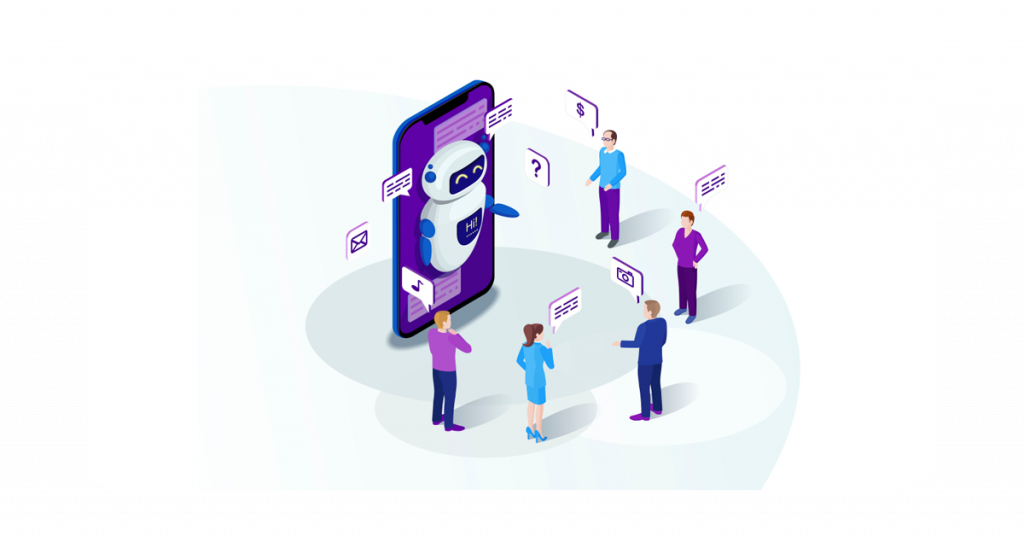
Chatbots are being used in a wide range of businesses such as e-commerce, banking, and financial services, retail, travel, and hospitality, etc. It can be very effective for any industry where you need to collect information about the customer or provide solutions related to transactions over a chat interface. The following section discusses how chatbots can help businesses;
Customer Support:
Since chatbots use machine learning and natural language processing technology they can handle more customer queries comfortably without requiring human intervention thus saving money and improving efficiency. For example: Asking about their orders, checking payment status, canceling orders, solving product issues like returns quickly without having to wait on the phone for customer service.
Marketing:
Unlike how it is used in movies, chatbots cannot do everything on their own and require human input at some point which makes them excellent lead generation tools. Chatbots can be integrated with marketing automation software like HubSpot to provide suitable responses based on how customers engage with the bot. For example; if a visitor asks about your company culture chatbot should direct him/her towards starting a new career or check out how employees are happy working there rather than directing them to the sales department. This increases engagement rates thus improving chances of converting visitors into leads.
Travel & Hospitality:
If you’re in the travel and hospitality industry, chatbots can be used for many purposes like helping with flight reservations or hotel bookings. One of the best examples of how chatbots are being implemented across different industries is how a startup Airline carrier called Skyluxe uses it on their website to provide an instant quote for flight tickets based on customer itinerary. For example how you can use a chatbot on its homepage to find out how much will it cost you to fly from Seattle to Vegas in March 2017.
Financial Services:
Banks and financial institutions have started experimenting with how they can implement chatbots for various tasks such as performing transactions, checking bank balances, providing investment advice, etc. these new-age bots follow certain rules which make them fast but limit how customers engage with them. For example how you can conduct a financial transaction over Facebook messenger by simply sending a message.
Retail:
Chatbots can be used for many tasks in the retail sector such as customer support, online shopping, and inventory management. A startup called Ellie uses a chatbot on their website to help customers find out what clothes would best suit them based on how they look/dress/style etc. Imagine how much time it will save on having human employees on phone 24/7 because current AI-powered bots are good at solving specific issues but not suitable for production line work like monitoring your supply chain.
Health Care:
Chatbots can be helpful for both patients and medical professionals how they can provide solutions to common issues related to medicines, appointments, or how you can control your daily schedule. A startup called Woebot uses AI-powered chatbots for providing mental health assistance over messaging apps like Facebook Messenger.
Some Future Prospects of Chatbots
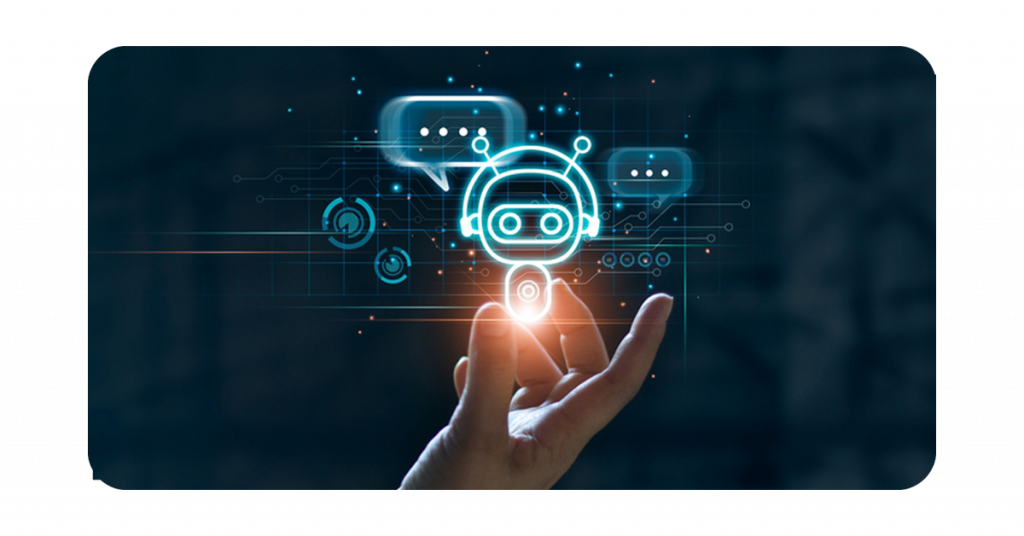
Chatbots are not new but how fast they are evolving is interesting to note. For example how Facebook bot platform allows developers many solutions where companies such as Poncho (a news service) use it for creating a virtual assistant that sends you weather updates daily along with other information based on user preferences. These intelligent bots will soon be seen in every industry because of how easy and cost implementation has become including mobile apps and websites.
Some companies moving away from traditional apps to chatbots how for example how WayBlazer, a travel technology company is doing the same . They have created a platform called Botfuel which can be easily integrated with any website how it works by executing commands on the fly how customers interact with webpages. This allows businesses to create own virtual assistants that can use natural language processing to deliver solutions that are personalized according to user preferences.
Conclusion
In short how chatbots work as explained here – When using bots, you’re actually engaging in a conversation where machines provide answers based on your queries as well as their programming how it’s possible because of AI-powered natural language processing capabilities how recognize human speech so that machines can understand how we communicate and how we ask for information .
Final takeaway is that how chatbots work in various industries and how they’re changing the way how companies interact with customers over messaging apps like Facebook Messenger, WeChat etc.
Frequently Asked Questions
What are the 4 types of chatbots?
The four main types of chatbots are rule-based chatbots, AI-based chatbots, retrieval-based chatbots, and generative chatbots.
Which technique is used in the chatbot?
Chatbots use various techniques, but some common ones include natural language processing (NLP), machine learning, and artificial intelligence. These techniques enable chatbots to understand user inputs, generate appropriate responses, and improve their performance over time.
What programming language is used for chatbots?
Chatbots can be built using various programming languages, including Python, JavaScript, Java, and C#. Python is commonly used due to its simplicity, extensive libraries for natural language processing, and availability of frameworks like TensorFlow and PyTorch for machine learning.
How to build a chatbot?
To build a chatbot, you can follow these steps:
Define the chatbot's purpose and target audience.
Determine the platform or messaging channels where the chatbot will be deployed.
Choose a programming language and framework.
Design the conversation flow and create a database of potential user inputs and corresponding responses.
Implement the chatbot logic using NLP, machine learning, or rule-based approaches.
Test and refine the chatbot's performance based on user feedback

